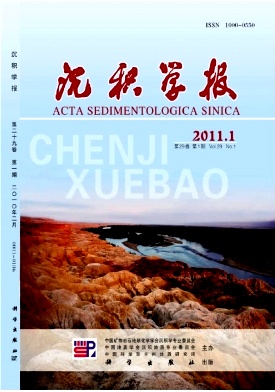Forming Mechanism and Their Environmental Implications of Chloritecoatings in Chang 6 Sandstone(Upper Triassic) of HuaQing Area, Ordos Basin
- Received Date: 1900-01-01
- Rev Recd Date: 1900-01-01
- Publish Date: 2011-02-10
-
Key words:
- 〓chlorite rim /
- constructive diagenesis /
- microfacies mark /
- Ordos basin
Abstract: 〓With thin section analysis and scanning electron microscopic analysis, the diagenetic phenomenon of Yanchan Formation sandstone in the Ordos basin were systematically studied, and it shows that chlorite film was the important diagenetic phenomenon in this area. Depending on the studies relevant to the features including occurrence, structural characteristics, relations between other diagenetic minerals of sandstones in this area, the formation mechanism was discussed in detail. Chlorite rim had some relevance with the original porosity of reservoirs, its formation had more closely relationship with hydrodynamic conditions during the contemporaneous deposition. They belonged to a mark of water power conditions for they occur mainly in the subaqueous distributary channel and mouth bar in the deltaic front, and had strong environmental specificity; chlorite rim had double layer structure in which isopachous rim cement of internal layer was relative dense, and formed during the early diagenetic stage. Outerlayer authigenic chlorite grown on the rim surface vertically with better crystal form was formed during the late diagenetic stage; chlorite film was of a limited ability to protect the sandstone porosity. The reason for this is that the porosity of sandstones with chlorite clay rim was better mainly depended on the petrological characteristics of sedimentary sandstones under strong hydrodynamic condition. It had little relation with the chlorite clay rim. So the formation model of chlorite clay rim was put forward. It was considered that the formation of the chlorite film experienced five steps: sedimentary stage of original particles, stage of clay adsorption and film formation on the surface of original particles, early compaction stage of particles, stage of rim chloritization, authigenic chlorite forming stage; In view of this, the sedimentary sandstone reservoirs that had chlorite clay rims under strong hydrodynamic conditions should be the target in the process of oil exploration.
| Citation: | YAO Jingli. Forming Mechanism and Their Environmental Implications of Chloritecoatings in Chang 6 Sandstone(Upper Triassic) of HuaQing Area, Ordos Basin[J]. Acta Sedimentologica Sinica, 2011, 29(1): 72-79. |






 DownLoad:
DownLoad: